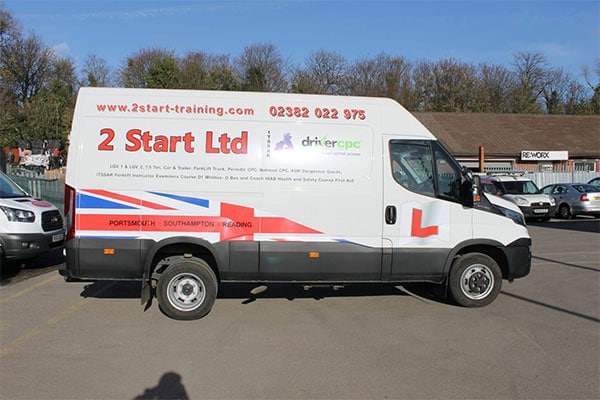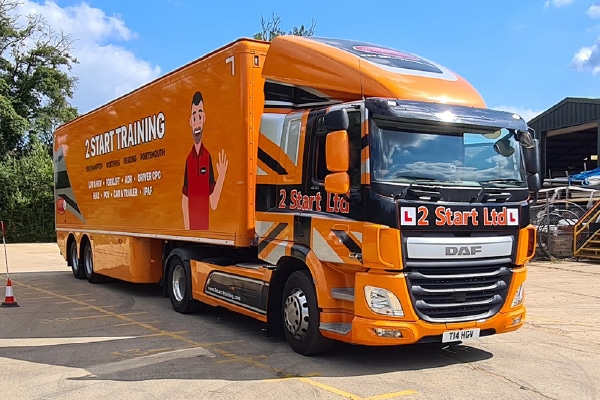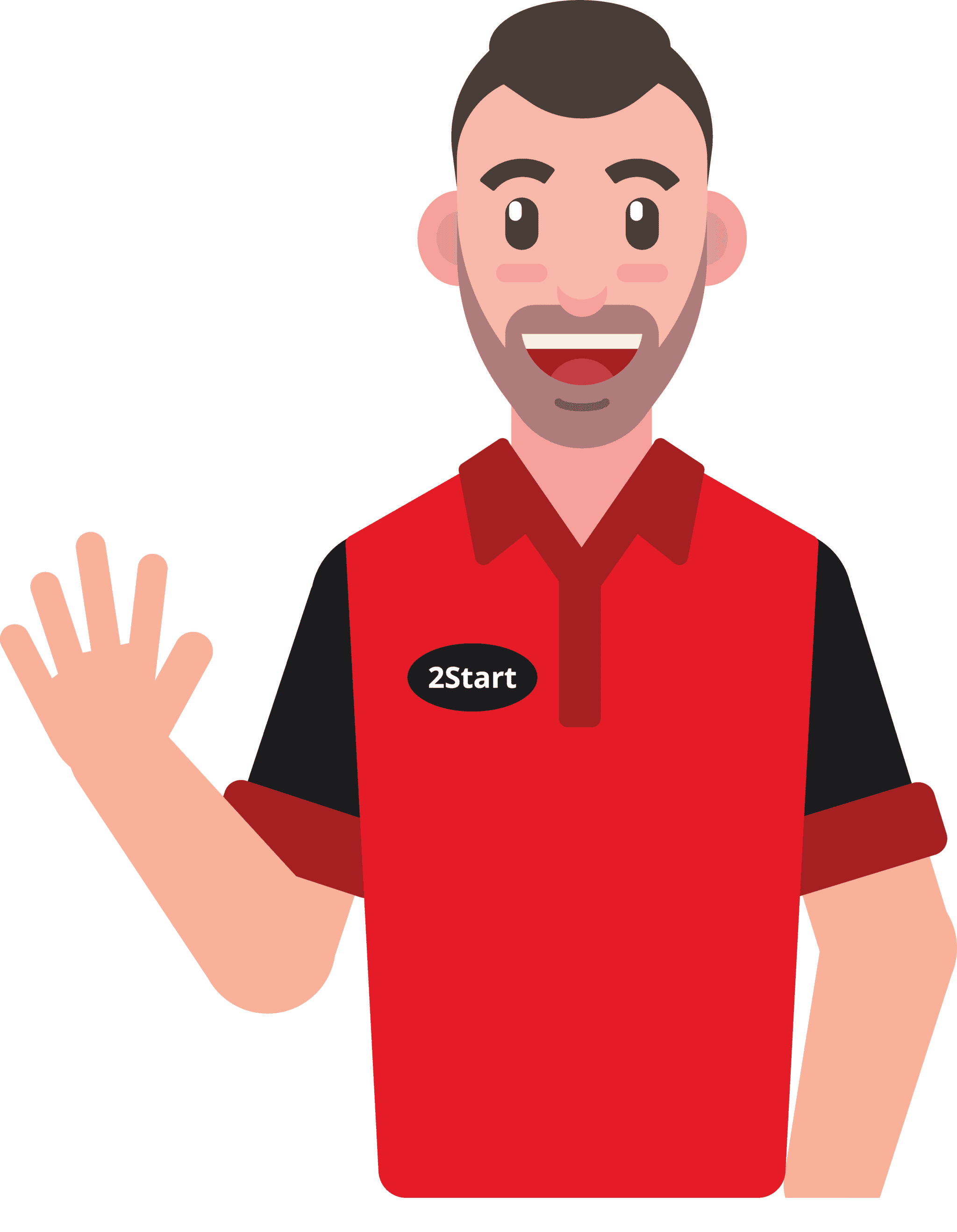Logistics – HGV Driver Training Courses
To begin your Heavy Goods Vehicle (HGV) training, start by understanding the categories of vehicles classified as an HGV or a Large Goods Vehicle (LGV). Although the names are different, they are not.
Both HGVs and LGVs are categories of licence. LGV typically refers to any vehicle with a weight of over 3.5 tonnes.
HGV/LGV training is necessary to obtain this licence.
There are three main types of HGVs that you can obtain your licence for.
UK Driving Licence categories & HGV Weight Limits
C1 – 7.5 Tonne
Also known as a 7.5 Tonne or Class 3 van or lorry. The Weight limit is what defines this as a C1 vehicle, as you must not exceed this weight.
C1+E – 7.5 Tonne with trailer attachment
A Category C1+E is a type of large vehicle. Typically consisting of a large van or truck with an attached trailer. The total weight of the vehicle and trailer is over 7.5 tonnes. This trailer attachment cannot exceed the 12 tonne “maximum authorised mass” (MAM) weight limit.


C – A rigid lorry with no weight limit (Average is 18 Tonne)
Referred to as a Category C, also known as a Class 2 vehicle (or LGV 2). This category will let you drive a rigid truck with a MAM weight of over 7.5 tonnes.
C+E – An HGV with a trailer attachment, with a weight limit up to 44 tonnes.
A Category C+E is commonly referred to as a Class 1 vehicle (or rarely, an LGV 1). A C+E is also known as an articulated truck.


Our Lorry Driver Training courses range from a 3.5-hour lesson to a 10-day fast-track course.
The modules differ per course but include:
- Walk-around checks
- Theory-based training
- Practical Training
Our Lorry Driver Training is designed to give you the confidence, knowledge and experience needed to drive the category licence required.
Training Journey
When beginning your training journey, there are a number of steps which must be met at a precise standard.
Step 1: Meeting the requirements
Once you hold these entitlements, you can move on to the next step of the journey.
- You must already hold a Category B car licence.
- You must be 18 years or older.
Step 2: Completing Your Medical.
Your D4 Medical form must be completed by a certified doctor. This will include you booking an appointment to attend a driver’s medical exam with a qualified doctor.
- Your local GP will conduct your medical examination. A further check-up with a local optician may be required.
- Depending on the course chosen, the arrangement and booking of this are done on your behalf by our team.
Step 3: Obtain Your Provisional Licence.
Once you pass your medical, you need to complete the D2 form. This will need to be sent to the DVSA. They will then apply the relevant provisional licence entitlements to your driving licence.
- Depending on the course chosen, the arrangement and booking of this are done on your behalf by our team.
Step 4: Theory Tests.
Once your provisional entitlements are added to your licence, you can book your hazard perception and multiple-choice theory tests.
- Both Theory tests must be passed within two years of each other.
- Depending on the course chosen, the arrangement and booking of this are done on your behalf by our team.
Step 5: Practical Training.
You will get practical training with an experienced instructor, who will teach you the specific knowledge needed. This will include how to drive an HGV based on the category chosen.
There are two parts to this training:
Part 3A (off-road exercises)
Firstly, you will learn how to safely reverse your chosen category of vehicle. You will be required to conduct an “S” shaped manoeuvre.
If you are training to drive a Class 1 lorry, you will also be required to complete a coupling & uncoupling procedure.
Part 3B (on-road driving)
This is practical driver training on the road. This will give you real-life experience in handling, manoeuvring, and operating an HGV vehicle on a public highway safely.
Step 6: Practical Test.
Once you and your instructor feel that you are confident and ready, you will undergo your driving tests, which will include:
- Off-Road Part 3a reversing (and the couple/uncouple procedure if testing for C1+E or C+E licence). Once you have successfully passed the 3a test, you can move on to the part 3b test.
- Once you have passed your 3a test with an on-site DVSA approved examiner, you must complete the 3b practical driving test with an external DVSA examiner.
The majority of our training depots have on-site reversing facilities and are approved DVSA 3a test sites.
If you intend to drive for hire and reward, you must complete 35 hours of periodic CPC training every 5 years.
This will include completing initial CPC training (MOD 4 & MOD 2).
This is in relation to those who do not currently hold a category C licence.
Can You Drive A Manual Lorry On An Automatic Licence?
If you have an automatic licence, then you will not be allowed to drive any manual transmission vehicles (these are vehicles with a gear box). You would have to pass your Category licence in a manual vehicle if you want to drive vehicles which are anything but automatic transmission.
Career Opportunities
Once you have become a qualified HGV/LGV driver, you can start thinking about increasing your income. You can do this by becoming an employed LGV driver.
Check out the job openings available on our website with companies across the South Coast.
Our Training Locations
2 Start Ltd provide HGV Lorry Driver Training at:
- Portsmouth (DVSA-approved test centre)
- Southampton (DVSA-approved test centre)
- Reading
- Worthing
- Theale
Learn more about our training depots.
Increase Your Earning Potential Today
Call Our Team on 02392 123 555 or complete our online enquiry form today.
Our advisors will aid you to find the best course that suits your needs and requirements.













Leave a Reply